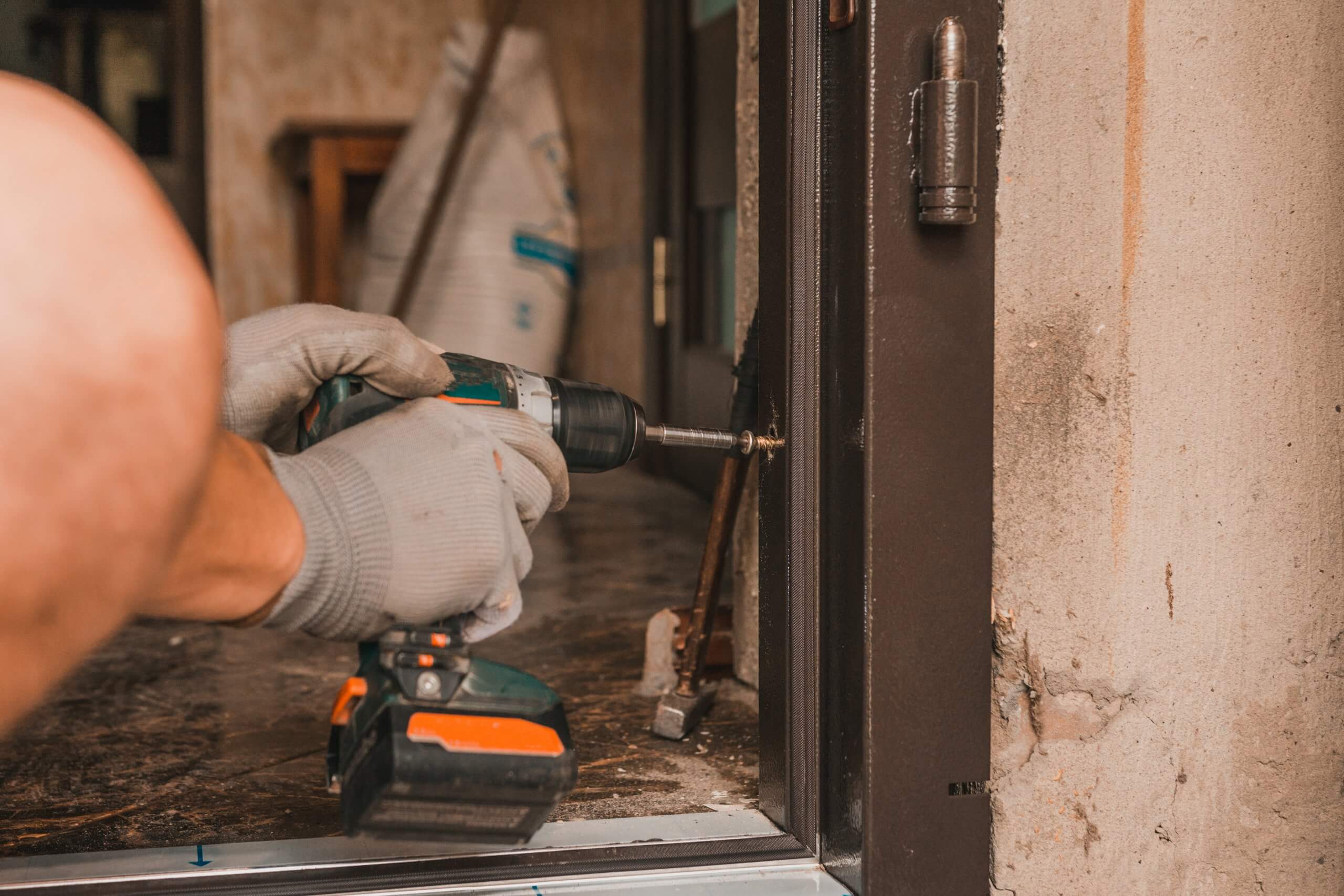
When you purchase a high-quality commercial door, you deserve a high-quality installation. Anchoring is a crucial step that increases the structural strength of the door and ensures proper door function. Anchors also add flexibility within the frame, allowing the door to absorb pressure from wind or damage and return to a proper fit.
One question that frequently arises in any discussion about commercial doors is: What defines a commercial door? Many places of businesses have the same types of hollow core or solid wood doors interior doors that are found inside any home. Isn’t any door in a commercial setting considered to be a commercial door?
The term “commercial door” typically refers to a solid steel, metal, wood or glass door that is used on the exterior and/or in the interior of a commercial building. Commercial doors are heavy and offer greater security than a traditional residential door.
Because of the great number of people that might go in and out of a commercial door every day, they are constructed from highly durable materials that are meant to withstand extreme use. Some commercial doors are even designed to protect against hurricane impact.
Just because a commercial door is strong in its function doesn’t mean it has to be weak in design. Commercial properties range in style. A warehouse and a hair salon both need the reliable construction of a commercial door, but maintaining the appropriate aesthetic is also necessary for brand recognition.
Fortunately, commercial doors are available in a variety of looks, from sleek and trendy to basic business styles. The one thing they all have in common, though, is the need to be securely anchored.
There are several kinds of anchoring systems, but four main types are most commonly used in commercial applications. It’s crucial that your installer understands which anchor is best for your building.
As the name indicates, compression anchors press the doorframe against the wall using a tension system. With this method, the frame must be installed first before the door can be attached. Compression anchors are most commonly used with drywall.
These anchors are actually long lag bolts that drill through the inside of the frame and are bolted into the stud behind. Stud anchors are another good option for drywall, and they are effective for securing a frame on block wall construction.
When used with a block wall, stud anchors are combined with a sleeve or wire anchor. After securing the stud anchor, the builder backfills the frame with concrete for a solid finish.
Wire and T-anchors are slightly different, but both are used during masonry construction and cannot be retrofitted.
A wire anchor consists of a metal frame with a connecting U-shaped wire. With this method, the door frame is set into place and anchors are set between the masonry blocks as they are installed around the opening.
Wire anchors are widely used in new construction because the wires can be resized to fit any jamb depth as needed. Like stud anchors, wire anchors are backfilled with concrete for extra security.
T-anchors are used in the same way as wire anchors and are also backfilled, but are shaped differently.
Sleeve anchors are similar to stud anchors, but they are designed specifically for use with a concrete wall. They are versatile fasteners for concrete and come in a wide range of diameters, lengths and head styles.
Flathead sleeve anchors are most commonly used to fasten a metal door frame to concrete. To use them, a builder first pre-drills a hole, then inserts the sleeve. Next, the toggle bolt is screwed through the frame and into the sleeve. Pressure from the bolt causes flanges on the sleeve to push outward and lodge against both sides of the drilled hole for a secure fit.
There are many other variations a builder might use to anchor a commercial door. The weight of the door or condition of the wall could require a combination of anchors to ensure the frame is securely attached.
The experts at CDF Distributors would be happy to discuss anchoring options when you place an order for commercial doors or door frames. Don’t hesitate to contact us with a question or to ask for a free quote on your next building project.